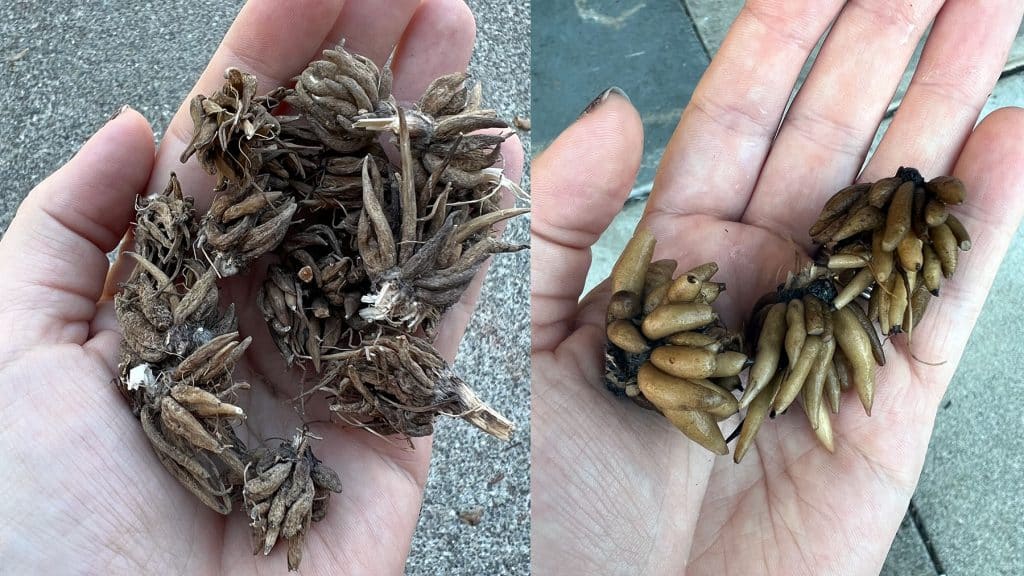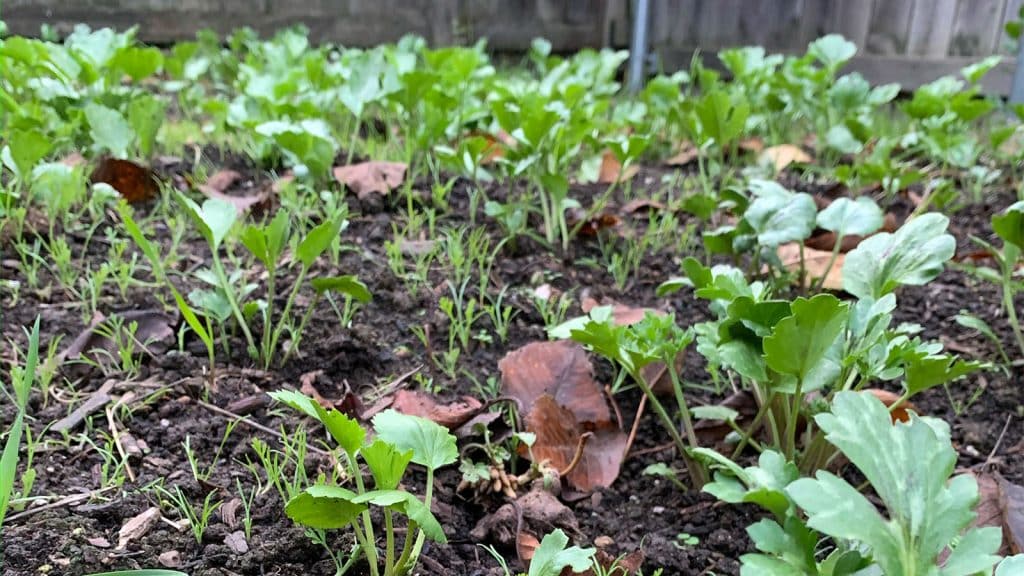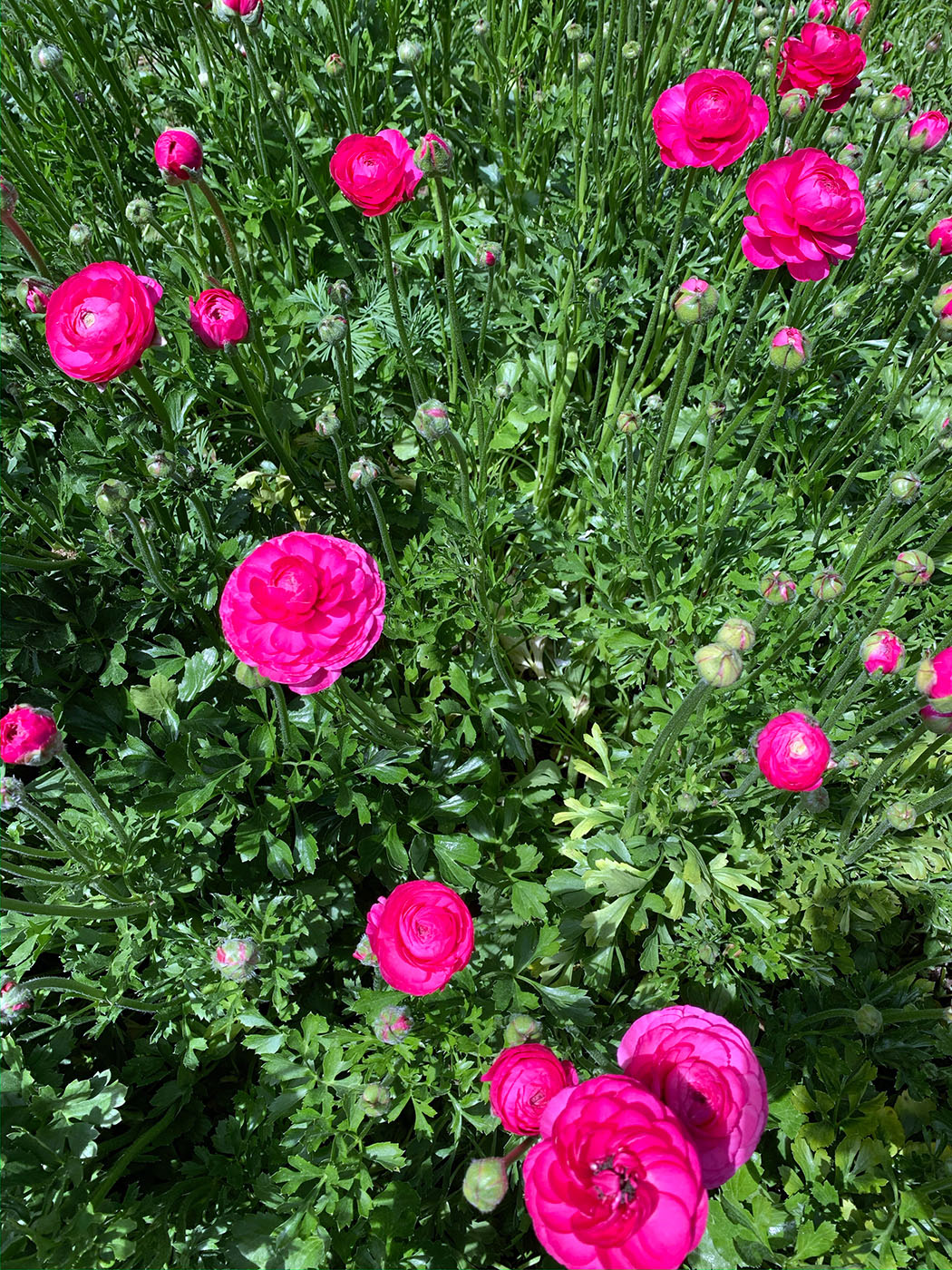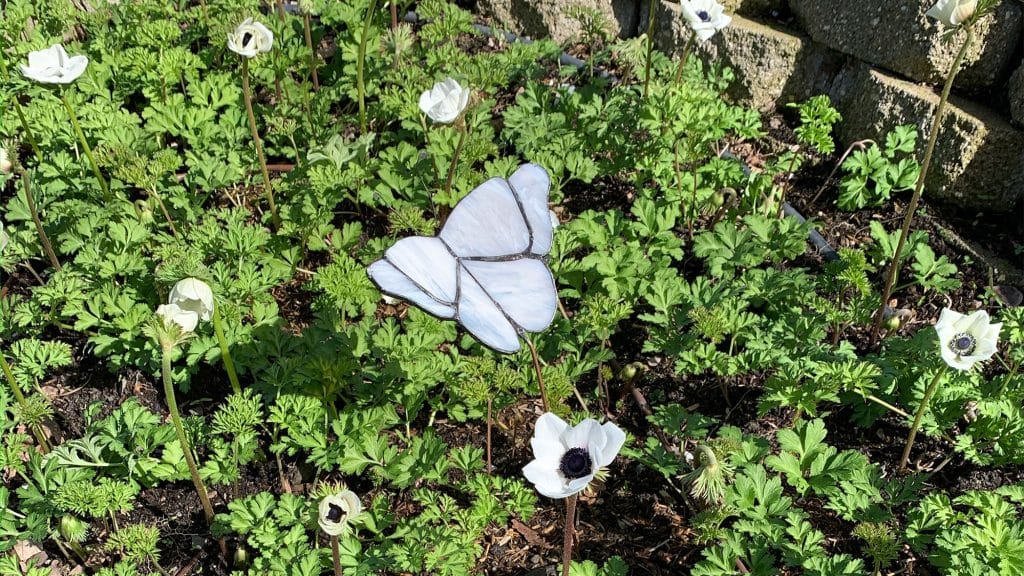Rancunulus and anemones are some of my favorite flowers, and when you grow them it’s easy to see why: on top of being stunning, complex and delicate flowers, the plants themselves are super productive, resilient and super low-maintenance for the first few months of their lives. I was super excited to be able to sell some unique ranunculus and anemone corms this year — here’s how to grow them in the Sacramento area.
Unboxing your corms: What the heck are these things?
Ranunculus and anemone plants are super similar in a lot of ways, so most of the information in this post can be applied to either variety (I’ll make sure to highlight the differences). One of the first similarities between them: Corms look weird! I always think they kinda look like little octopuses (or is it still octopi?). But don’t be put off by their initial look: With a little work, they’ll produce a ton of beautiful flowers come next spring.
Step 1: Soak

In Sacramento (USDA hardiness zone 9b), ranculus and anemones should be planted in the fall (ideally October) for spring blooming. Once you’re ready to plant yours, start by soaking the corms in water for four to six hours. You’ll know it’s been long enough when the corms plump up.
Step 1b: Decision time — plant or pre-sprout
From here there are two ways you can go. You can plant your corms directly into the ground (skip to step 3) or pre-sprout them (go to step 2). Pre-sprouting takes a bit of extra work, but will help your flowers bloom sooner in the spring.
Step 2: Pre-sprout for earlier blooms
With a bit of extra work now, you can enjoy flowers sooner in the spring. To pre-sprout your ranunculus and anemones, just cover the corms with damp soil and place them somewhere dark, like in the messy corner of the garage (I hope I’m not the only one!), for 10-14 days. Water just enough to keep the soil damp that whole time. After that time, you should see some root growth, and you might even see some leafy growth as well.

Step 3: Time to plant them
You don’t have to do anything special to plant your ranunculus or anemone corms: Just space them appropriately:
- Plant ranunculus 9-12 inches apart. Plant anemones 6 inches apart.
- Plant them 2-3 inches deep, with the “octopus legs” facing down.
- Ranunculus and anemone prefer full sun.
Step 4: Do nothing
Now this is my kind of instruction! Don’t do anything to take care of those plants: Don’t water them, don’t stress over them, don’t sing to them (OK, you can actually do that last one if you’d like, and I won’t judge you). Seriously, you don’t need to water your ranunculus or anemone corms until they start to sprout leaves. At that point, you can start watering them.
The Sacramento region’s climate makes this step a bit easier, so you may see extra instructions here if you look elsewhere online for ranunculus or anemone growing instructions. Since we don’t get hard frosts, you won’t need a hoop house or anything elaborate to keep your plants warm over the winter. I don’t even cover my ranunculus or anemone plants in the winter unless they’re starting to bloom (like if we get a super late frost).

`Step 5: Harvest and enjoy!
As I mentioned on the pages for my ranunculus and anemone corms, you should get quite a few flowers out of these beauties: Each ranunculus corm produces five to 15 flowers, and each anemone corm produces 10-20 flowers. Ranunculus stems are usually 10-20 inches tall, while anemone stems are usually between 15 and 24 inches tall.
I hope you have a great time growing your rancunulus and anemones!








